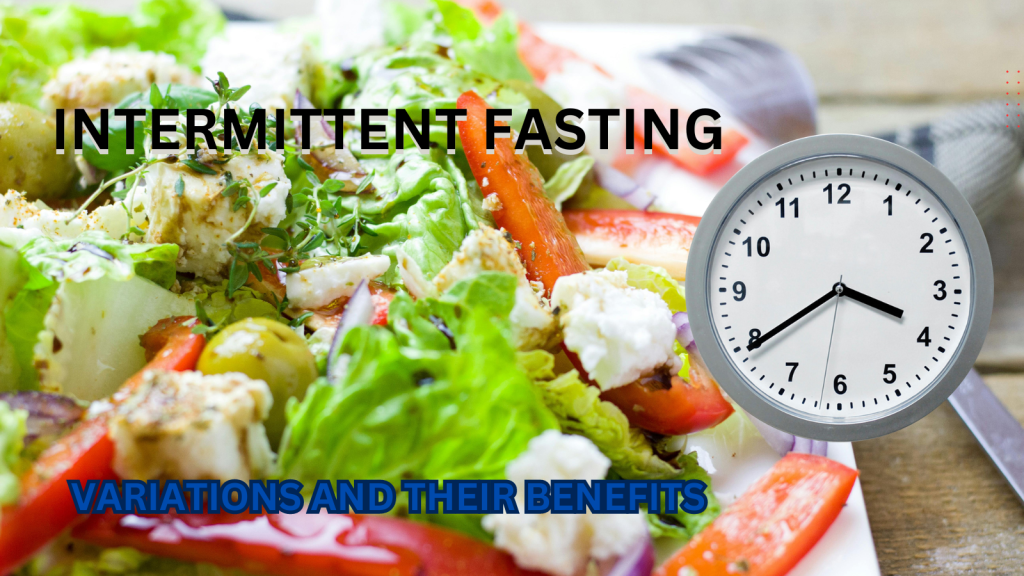Intermittent fasting (IF) has gained widespread popularity as an effective approach to weight loss, improved metabolic health, and overall wellness. Unlike traditional diets that focus on what to eat, intermittent fasting emphasizes when to eat. By cycling between periods of eating and fasting, this method can help optimize bodily functions. However, there isn’t a one-size-fits-all approach to intermittent fasting. Various IF methods cater to different lifestyles, needs, and health goals. Let’s explore some popular intermittent fasting variations and their benefits.
1. The 16/8 Method
The 16/8 method involves fasting for 16 hours and eating within an 8-hour window. This is one of the most popular and accessible forms of intermittent fasting, often referred to as the Leangains protocol.
- How It Works: Typically, you skip breakfast and consume your meals between 12 p.m. and 8 p.m. or adjust the eating window to suit your schedule.
- Benefits: This method helps reduce calorie intake, promotes fat loss, and improves metabolic health. It is also relatively easy to stick to because it allows for a daily eating window, making it suitable for beginners.
2. The 5:2 Diet
The 5:2 diet, also known as the Fast Diet, involves eating normally for five days a week and significantly reducing calorie intake (to around 500-600 calories) on the other two days.
- How It Works:
- Choose any two non-consecutive days of the week for fasting, such as Monday and Thursday, and eat normally on the other days.
- Benefits:
- Research suggests that the 5:2 method can help with weight loss, reduce insulin levels, and improve cardiovascular health. Because it only requires calorie restriction two days a week, many find it more sustainable.
3. Eat-Stop-Eat
This method involves fasting for a full 24 hours once or twice a week. It was popularized by fitness expert Brad Pilon and is ideal for those who want to take their fasting routine to the next level.
- How It Works:
- You might finish dinner at 7 p.m. and not eat again until 7 p.m. the next day. Water, coffee, and other non-caloric beverages are allowed during the fasting period.
- Benefits:
- Eat-Stop-Eat can lead to rapid fat loss, enhanced autophagy (the body’s cellular repair process), and improved metabolic function. However, a full 24-hour fast can be challenging for some, especially beginners.
4. The Warrior Diet
The Warrior Diet, created by Ori Hofmekler, involves fasting for 20 hours each day and eating one large meal at night. During the 20-hour fasting window, you can consume small amounts of raw fruits and vegetables or low-calorie liquids.
- How It Works:
- The diet mimics the eating patterns of ancient warriors, focusing on one main meal in the evening.
- Benefits:
- It emphasizes nutrient-dense foods, making it easier to consume a high-quality diet. This approach can help with fat loss, muscle preservation, and improved energy levels throughout the day.
5. Alternate-Day Fasting
Alternate-day fasting (ADF) involves alternating between fasting and non-fasting days. On fasting days, calorie intake is limited to about 500-600 calories, while on non-fasting days, you eat normally.
- How It Works:
- You fast every other day, allowing for a balance between fasting and regular eating.
- Benefits:
- ADF is highly effective for weight loss and improving metabolic health, particularly for those with insulin resistance. Studies have shown that it can lead to substantial reductions in body fat, cholesterol levels, and inflammation markers.
6. Spontaneous Meal Skipping
This is a more casual and flexible approach to intermittent fasting where individuals skip meals whenever they aren’t hungry or don’t feel like eating.
- How It Works:
- This method doesn’t follow a strict schedule; instead, you skip meals as needed.
- Benefits:
- It provides flexibility, making it the least restrictive and easiest to incorporate into a varied lifestyle. This method is great for those who want to start intermittent fasting without the pressure of rigid schedules.
Benefits of Intermittent Fasting
Intermittent fasting isn’t just about weight loss; it offers a number of other health benefits that contribute to overall wellness:
Weight Loss and Fat Loss:
By reducing the eating window, IF naturally leads to fewer calories consumed, promoting weight loss and fat reduction.
Improved Insulin Sensitivity:
IF helps lower blood sugar levels and improve insulin sensitivity, reducing the risk of type 2 diabetes.
Enhanced Brain Health:
Intermittent fasting increases the production of brain-derived neurotrophic factor (BDNF), a protein that supports brain function, potentially reducing the risk of neurodegenerative diseases.
Cellular Repair and Longevity:
Fasting triggers autophagy, a process where the body removes damaged cells and regenerates new ones, which may contribute to anti-aging benefits.
Reduced Inflammation:
Studies have shown that intermittent fasting can help reduce inflammation, which is linked to various chronic diseases.
Choosing the Right Intermittent Fasting Method
Choosing the best intermittent fasting variation depends on your lifestyle, health goals, and comfort level. Beginners might start with the 16/8 method, while those looking for more significant results might explore the 5:2 diet or alternate-day fasting. It’s essential to listen to your body, stay hydrated, and ensure you’re getting adequate nutrition during eating periods.
Conclusion
Intermittent fasting offers various methods to suit different lifestyles and goals, each with unique benefits ranging from weight loss to improved brain function and longevity. As with any diet or lifestyle change, it’s crucial to consult with a healthcare professional before starting to ensure it aligns with your health needs and goals. By choosing a variation that fits your routine, you can reap the benefits of intermittent fasting and embark on a healthier, more balanced lifestyle.um dolor sit amet, consectetur adipiscing elit. Ut elit tellus, luctus nec ullamcorper mattis, pulvinar dapibus leo.




